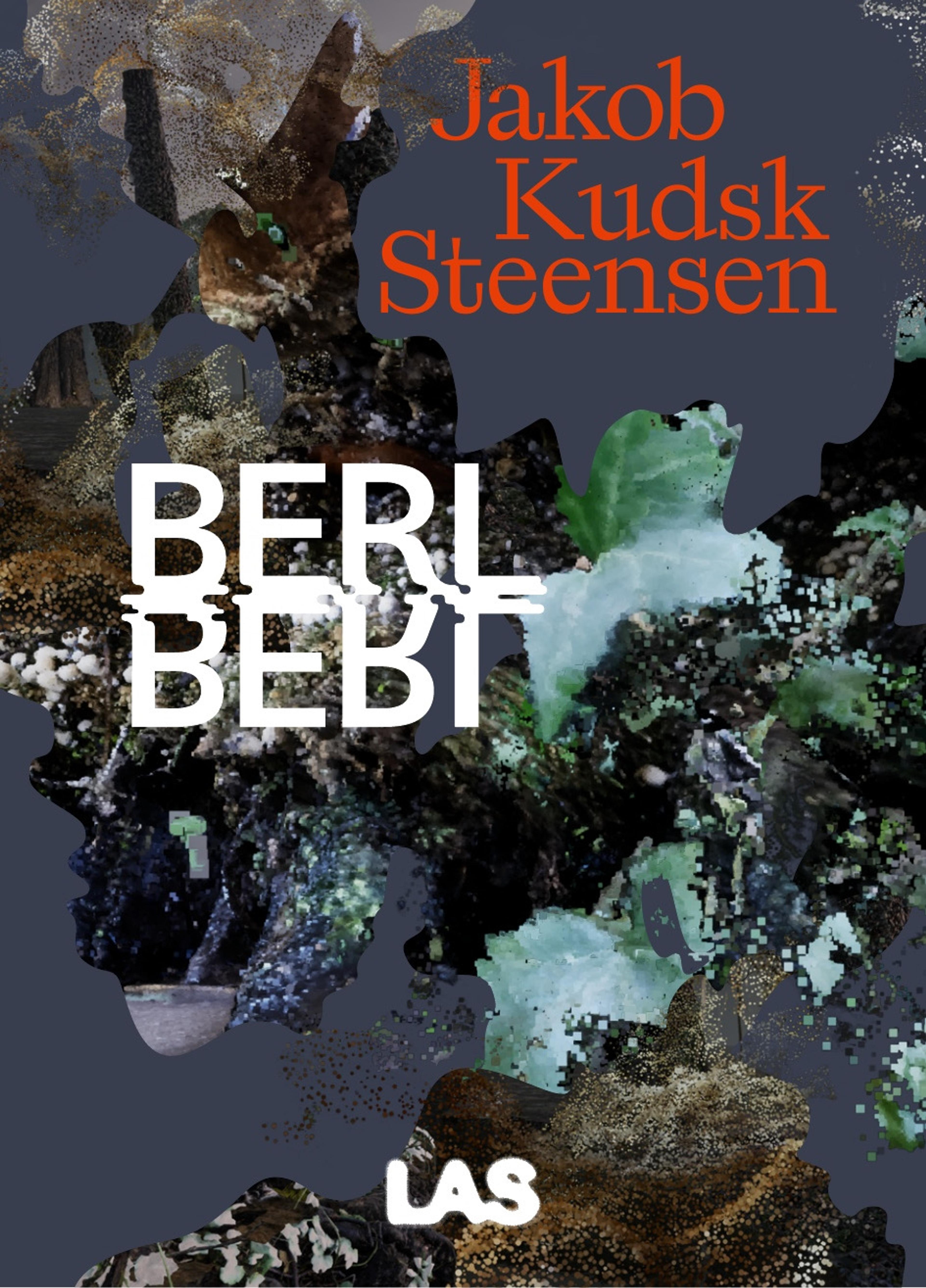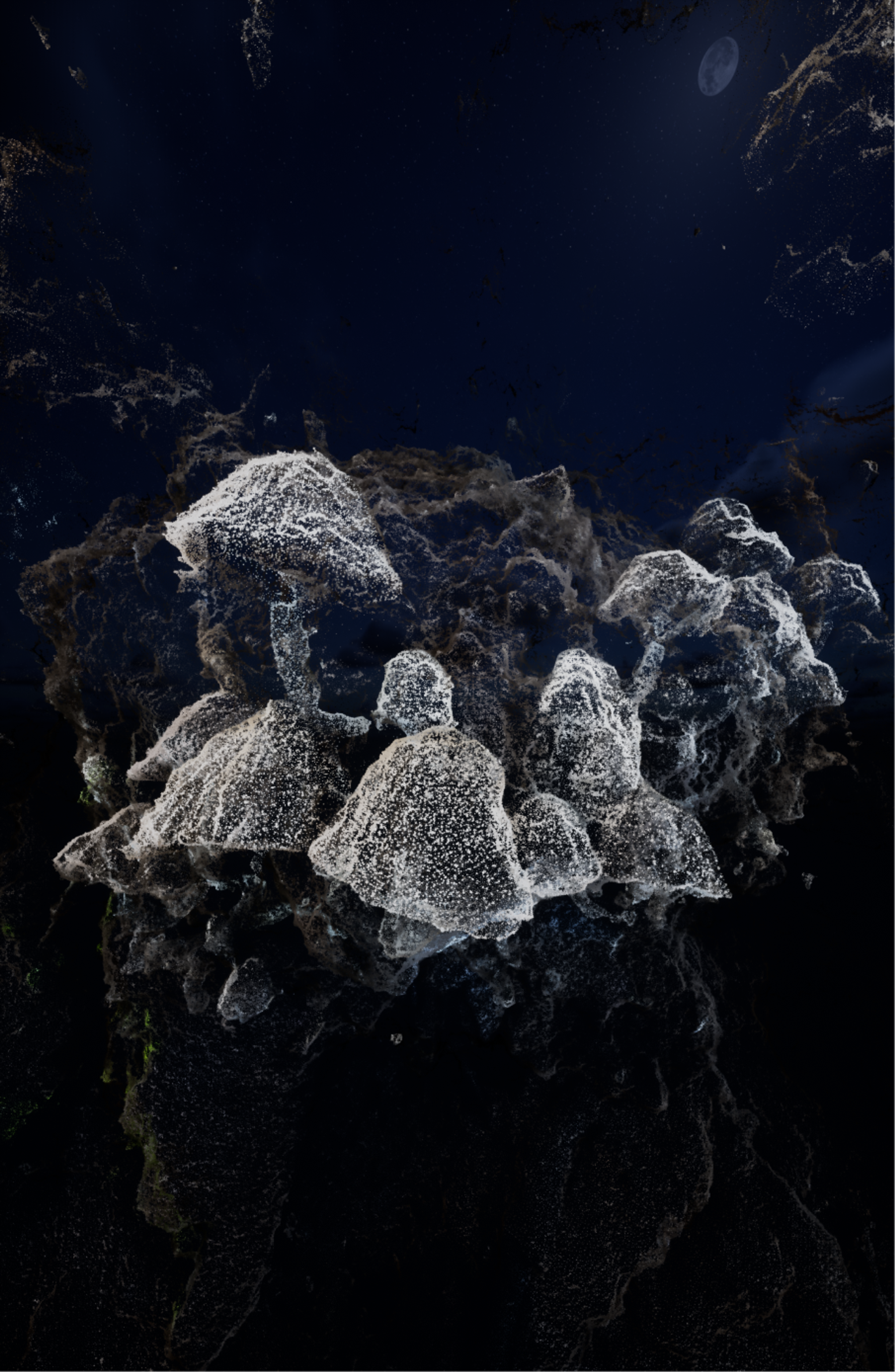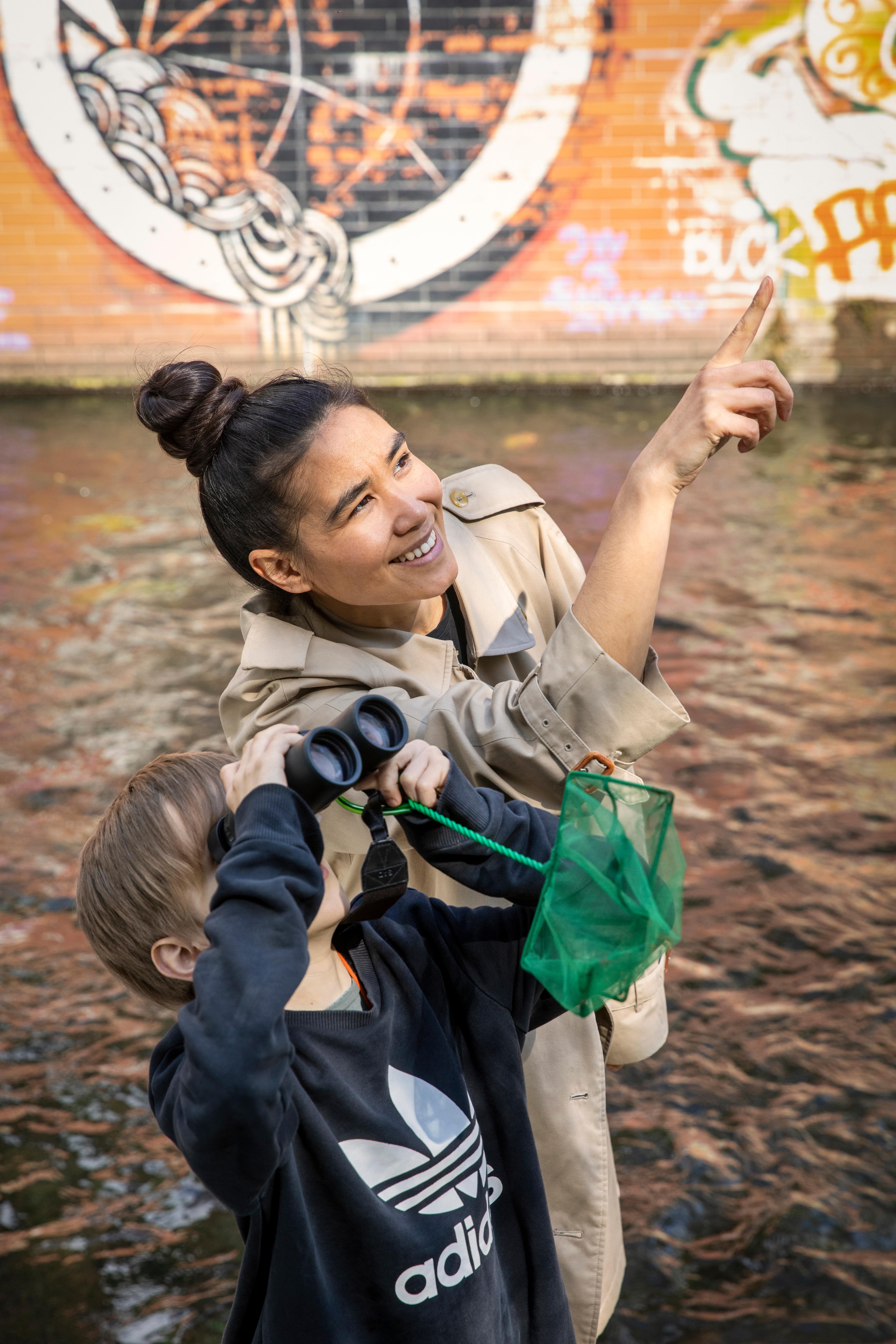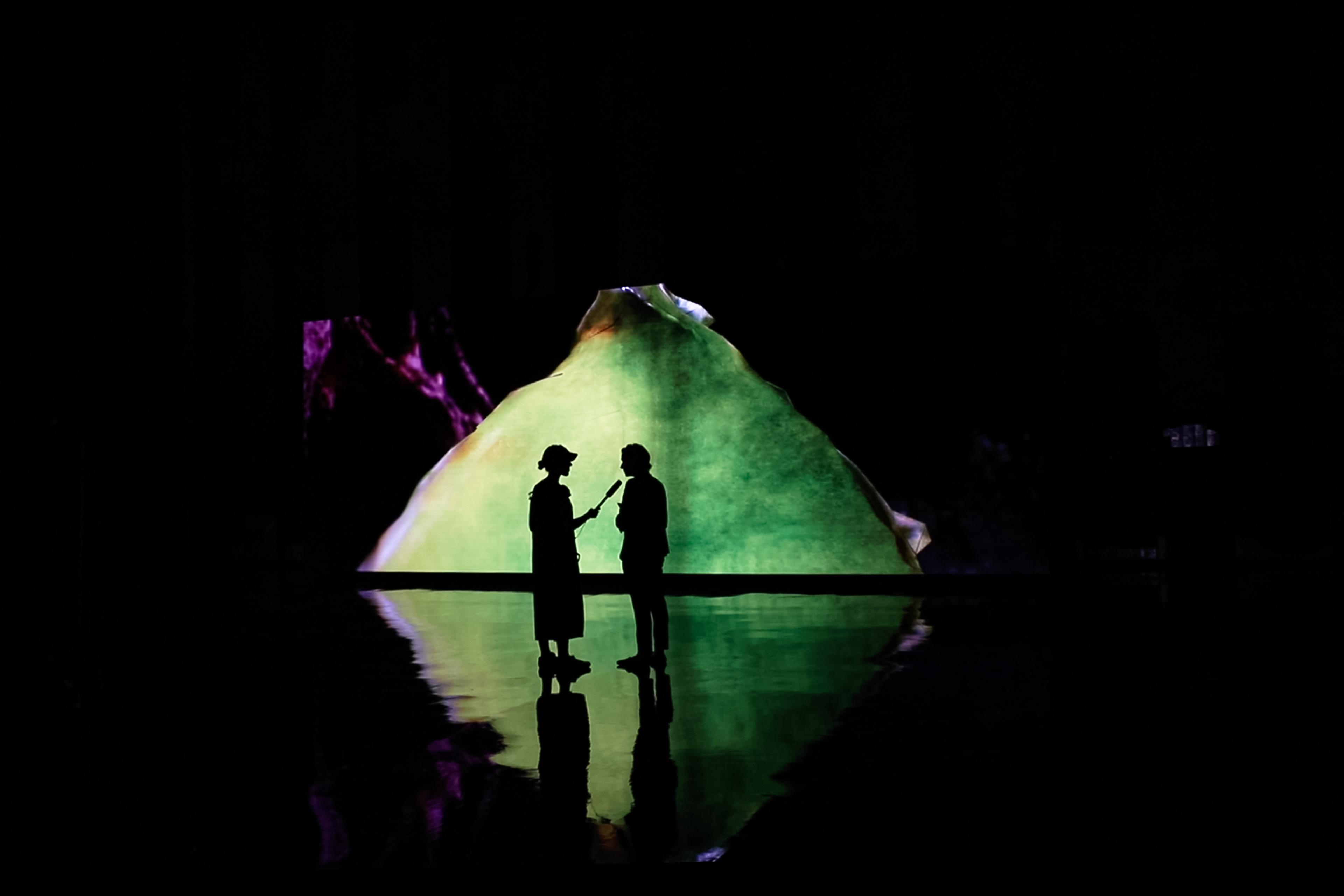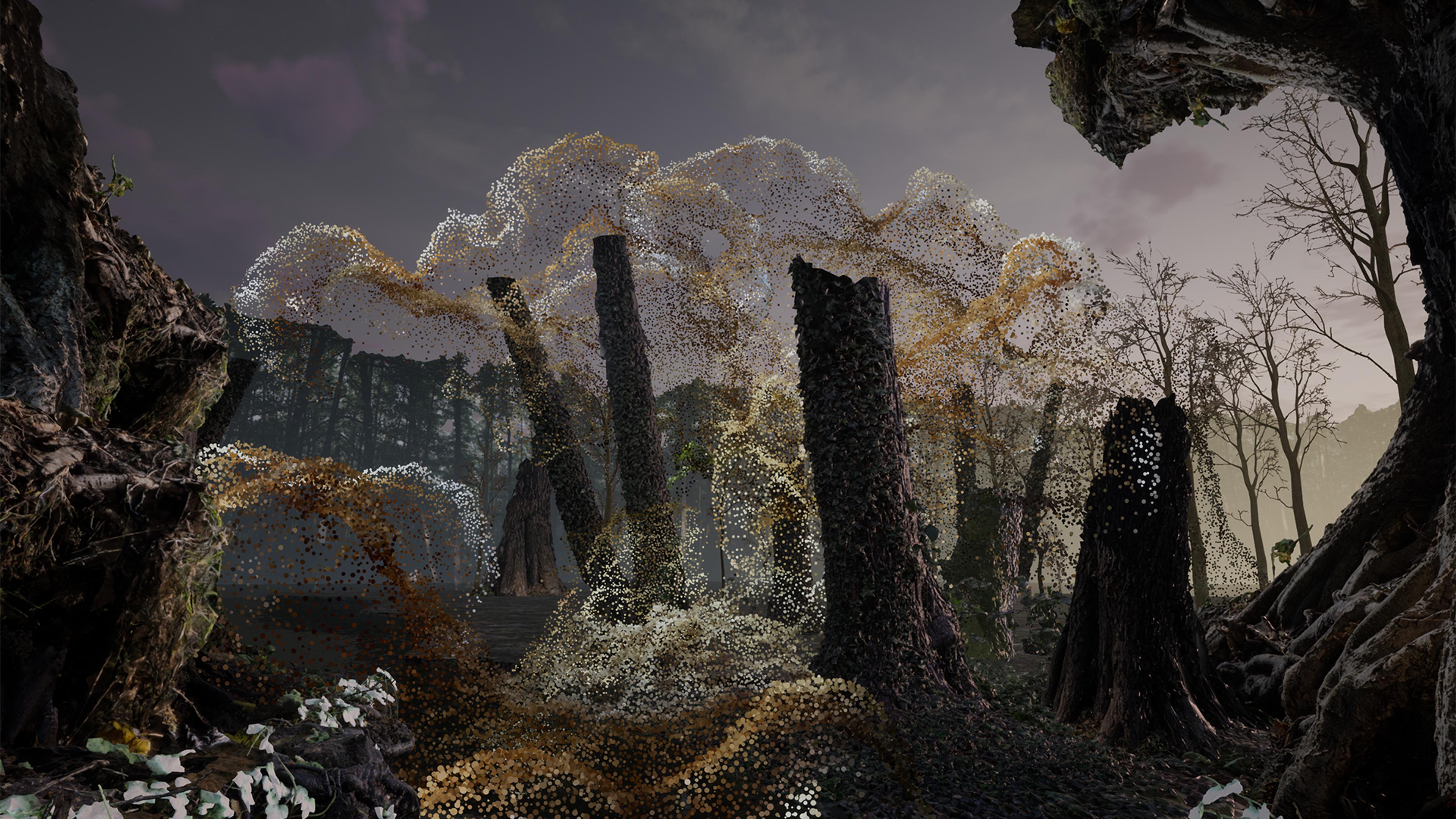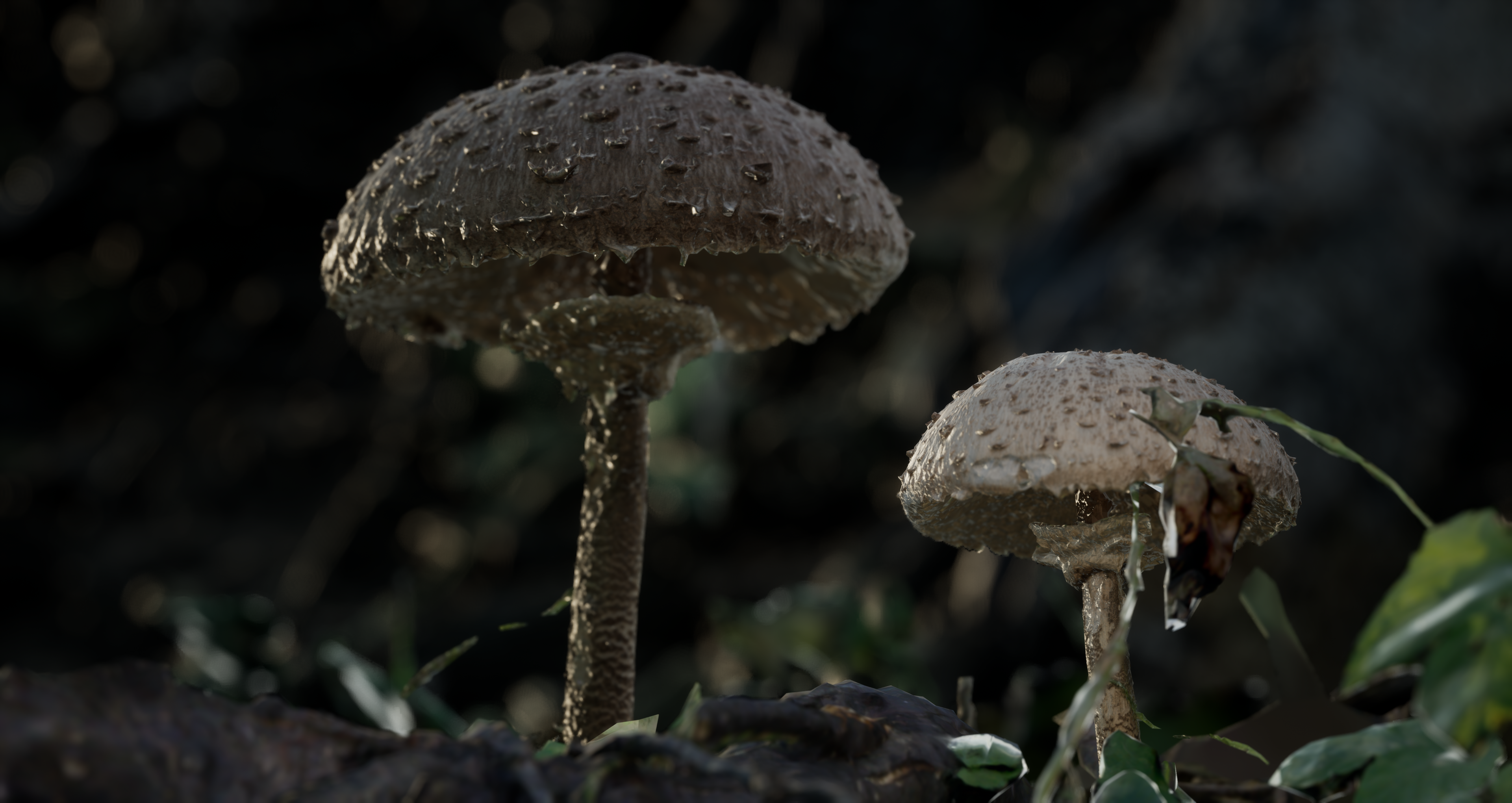Jakob Kudsk SteensenBerl-Berl
10 July 2021 — 26 Sep 2021
Halle am Berghain
An immersive installation that leads us to Berlin's origins as a swamp formed by a glacial valley over 10,000 years old.
Jakob Kudsk Steensen's new commissioned work, his first exhibition in Berlin, transforms the Halle am Berghain into a swamp, exploring its ecology and mythology.
Jakob Kudsk Steensen (b. 1987, Køge, Denmark) works at the vanguard of art and technology, utilising advancements in photography and gaming platforms to create immersive, three-dimensional worlds in direct relation to our natural world. The exhibition and online world Berl-Berl starts with a swamp as its protagonist – its ecosystem, history and mythologies – and pays tribute to Berlin's origin as a wetland that formed over 10,000 years ago, and was drained in the 1700s. ‘Berl’, the ancient Slavic word for swamp, is thought to be the origin of ‘Berlin’ and gives the exhibition its name.
The artist spent months researching the remaining wetlands of Berlin-Brandenburg, creating an archive of images using a method of macro photogrammetry in which he takes hundreds of images of a single object such as a leaf or patch of mud. Kudsk Steensen renders his findings in a 3D plan to create an immersive, absolute landscape using the video game platform Unreal Engine, a constant within his practice. Partnering with the Museum für Naturkunde Berlin, he also wove local specimens from their extensive archive into the visual and acoustic world of Berl-Berl. As songs were essential to ancient wetland culture and used to navigate the swamp and to share its mythologies, Kudsk Steensen collaborated with sound artist Matt McCorkle and singer Arca to create the world’s soundscape. Arca’s voice morphs with environmental sounds that include those made by local amphibians.
Berl-Berl is not only an image of the wetlands — it holds the memories of its past mythologies. Before it was drained, this saturated landscape proved ideal for the settlement of Slavic communities. This history, notably Sorbian folklore, permeates the work’s narrative wherein a Triglav, a deity, appears as a great tree. The artist connects the mythology of this three-headed deity representing three dimensions of Slavic cosmology—Prav (Heaven), Yav (Earth) and Nav (Underworld) — to his understanding of the swamp. In Berl-Berl, the ecology is also a Triglav, it moves from undergrowth and fungi to water, leaves, and trees and sky—an entire, holistic landscape.
In combining his images and recordings from the wetlands with research on ecosystems, the artist builds a bridge between us and the history beneath our feet. Halle am Berghain becomes a gateway in which relics of the Ice Age connect to present-day wetlands, drawing attention to our current environmental reality. Kudsk Steensen reveals a perspective that would otherwise be impossible to see or experience with the hope of sparking a newfound appreciation for the swamp and to reimagine our role within this ecosystem that sustains us.
‘Berl-Berl is a song for the swamp, a place for the undefinable - morphing, liminal and mystical. Berl-Berl mourns what is lost and embraces what is new.’
– Jakob Kudsk Steensen
‘It has been a great privilege to curate for LAS. They have a visionary, experimental, and open approach to thinking about the role an arts foundation can play within society.’
– Emma Enderby
Biographies
02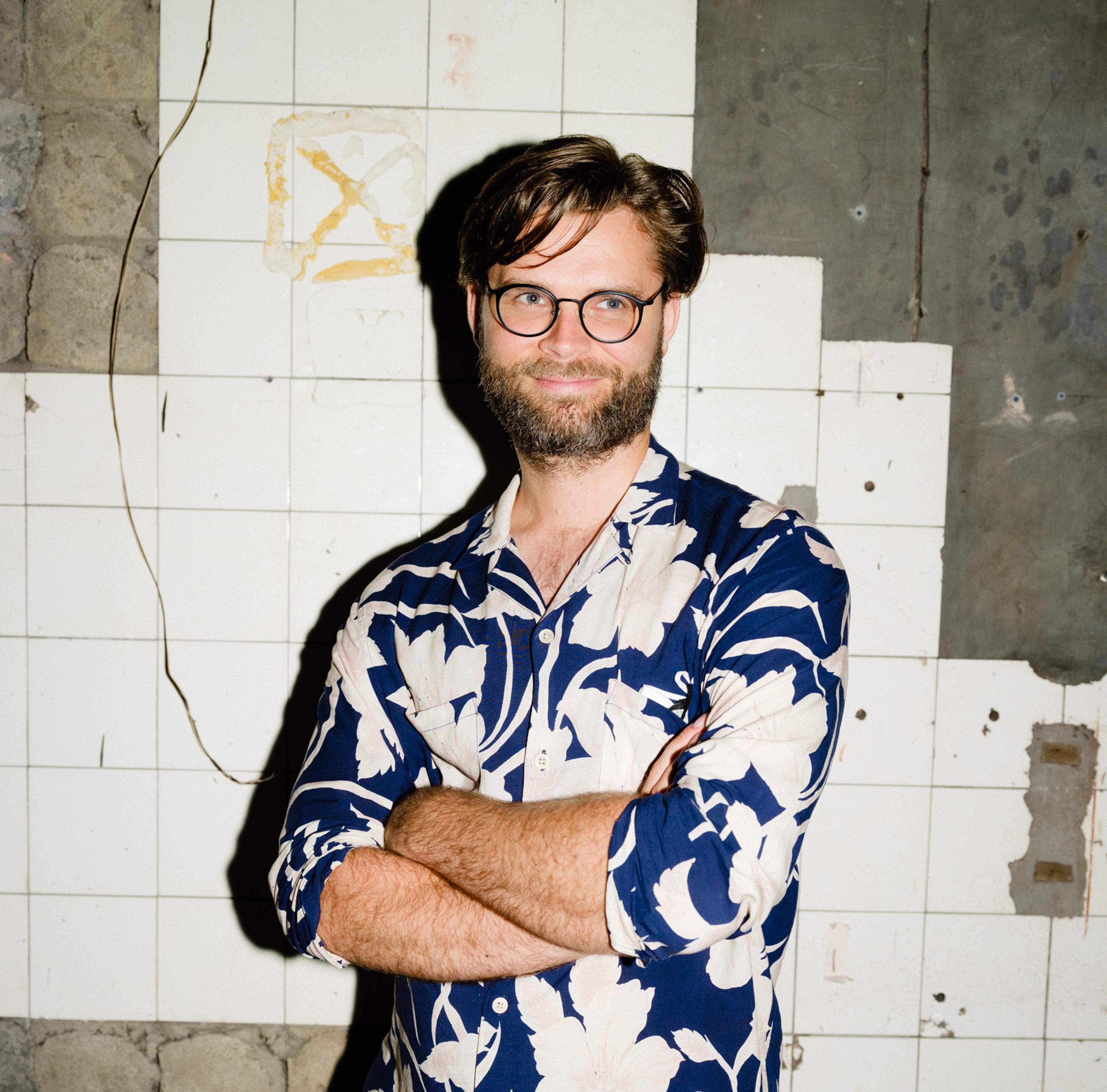
Jakob Kudsk Steensen

Emma Enderby
Related Articles
06Press
02Credits
Jakob Kudsk Steensen: Berl-Berl, 2021
Live simulation.
Sound composition and music by Matt McCorkle
Featuring music by Arca
© 2021 Jakob Kudsk Steensen
Commissioned by Light Art Space (LAS)
Curated by Emma Enderby
Assistant Curator: Liz Stumpf
Production Credits
LAS Team
LAS Project Management
Webelements
Visual Identity: Wkshps x Studio Pandan
